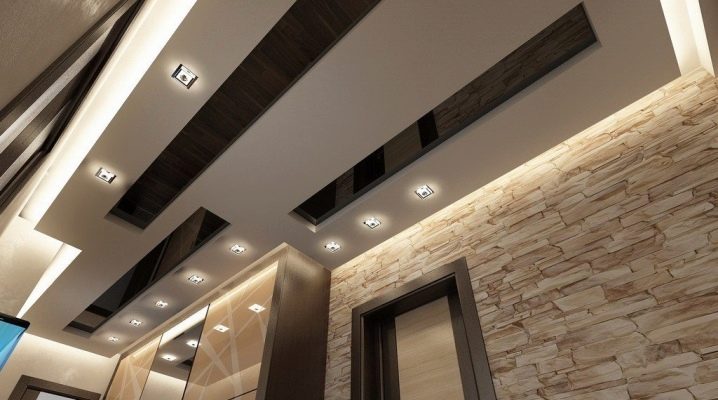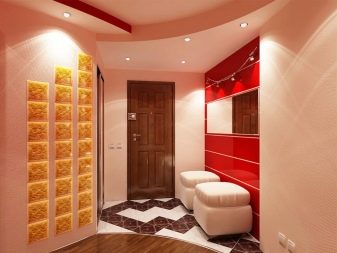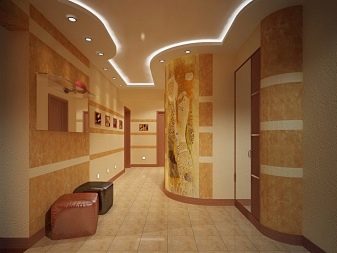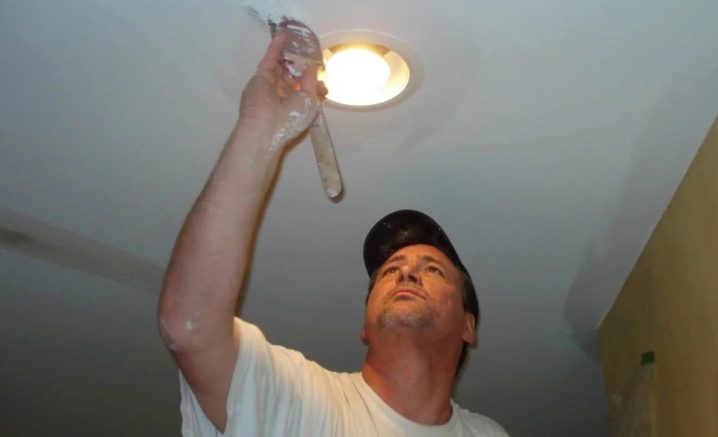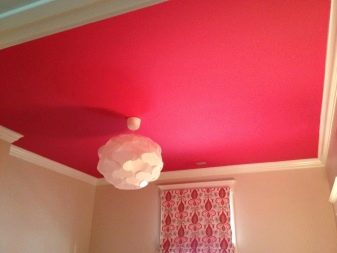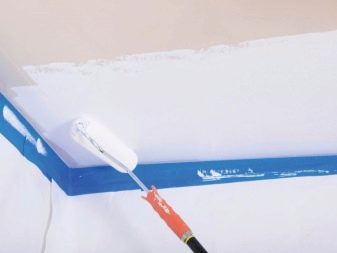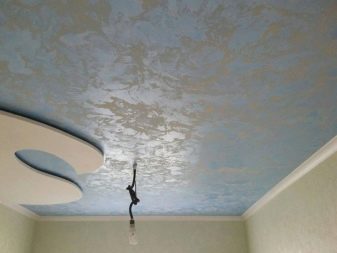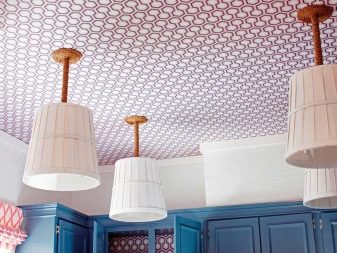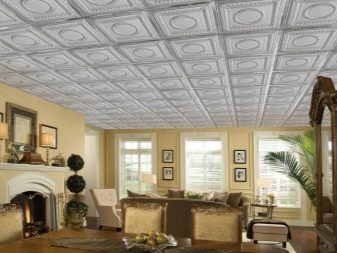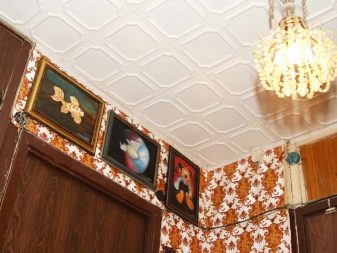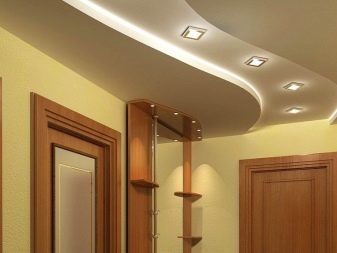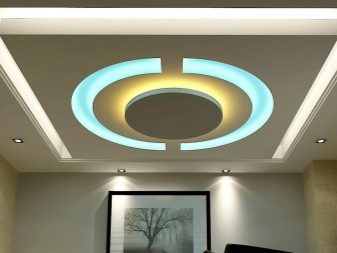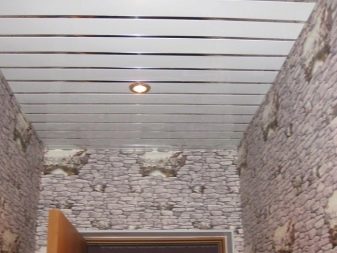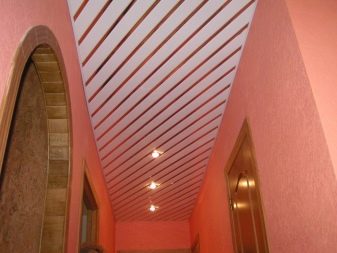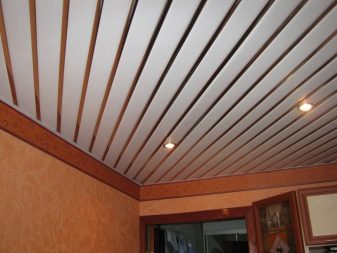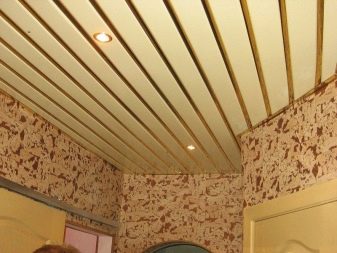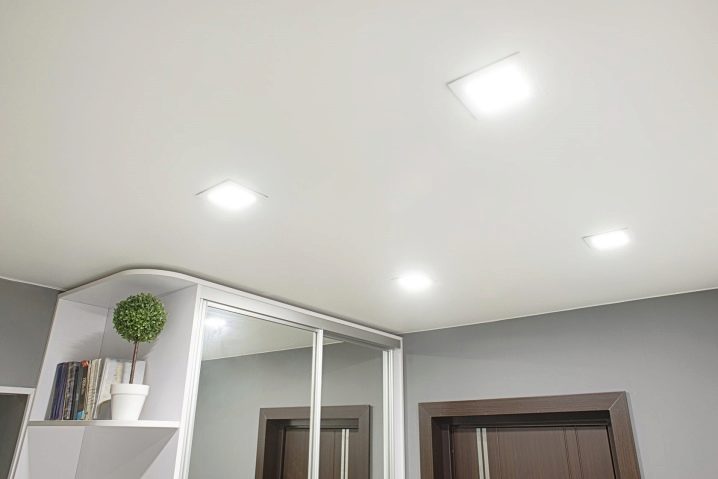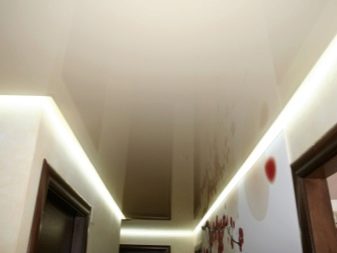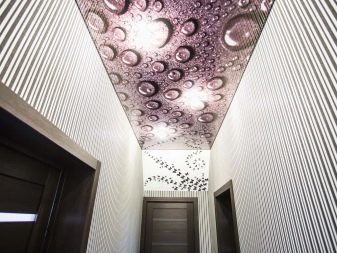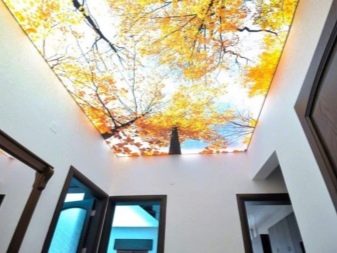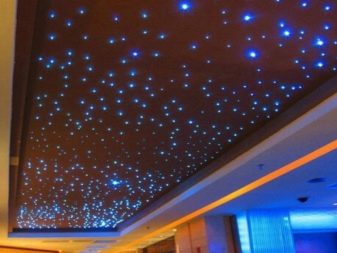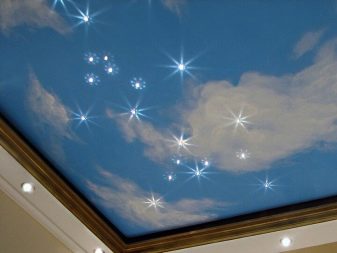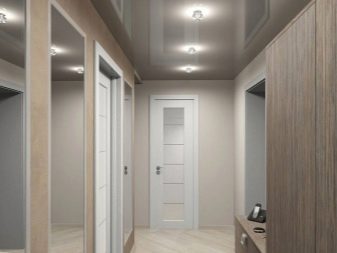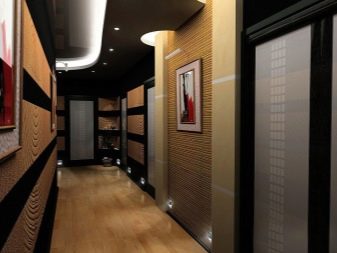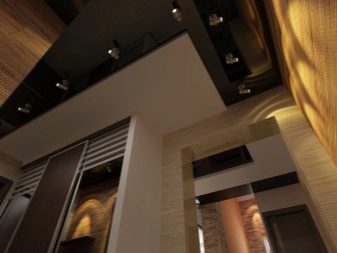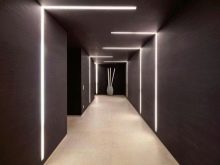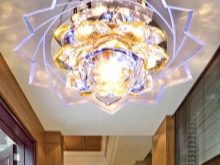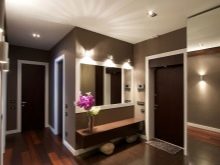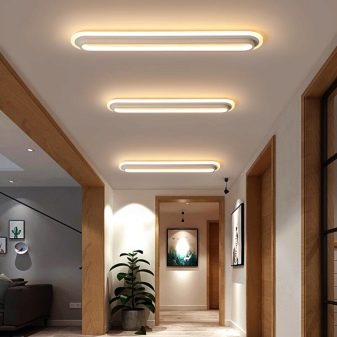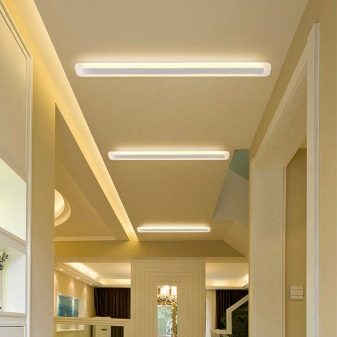Ceiling design in the hallway
When renovating hallways, work usually begins with finishing the ceiling. The hallway is the first thing that a person sees when entering an apartment. Therefore, the color of the ceiling, the texture should be fully consistent with the general surroundings of the living space. The rich assortment allows you to choose the finishing option according to your own taste.
Finishing trends
Most often, the ceiling in the corridor is made out in several ways.
Whitewash
The easiest and cheapest option. For high-quality whitewashing, you first need to level the walls. Among the disadvantages of this method:
- the old layer may begin to crumble and sprinkle;
- before the new whitewash, you will have to remove the old layer.
Ceiling paint
It doesn't cost too much. However, the range of colors of high-quality ceiling paint is huge. This method is suitable for perfectly flat surfaces, since the paint can emphasize all the unevenness and roughness. Before painting, the canvas will need to be prepared: putty the cracks and plaster.
Decorative paint and plaster
The advantage of the decorative material is that the surfaces do not require special preparation. The paint is applied with a roller, which allows you to hide minor defects in the bases.
Wallpaper
The classic version of the design of ceilings. On sale you can find many different options for wallpaper - their colors and technical characteristics are determined by cost.
Ceiling tiles
There is no need to cook the surface - you can immediately install the plates on the ceiling.
Plasterboard ceilings
This is a suspension system on which special slabs of material are attached. This method allows you to even out even strong defects. First, a frame is mounted on the ceiling, which is then sheathed with sheets of drywall. Then the surface needs to be putty and painted.
Pros of this option:
- simplicity and speed of installation;
- the ability to create structures in several levels;
- affordability;
- design variability (painting, finishing with textured plaster or wallpaper);
- the ability to install an unusual backlight of any intensity.
The downside of the material is that during installation, the sentiments of the ceiling height are "eaten up".
Rack ceiling
This option is a cladding in the form of special panels. There are options in aluminum, steel or plastic. The material is varnished and does not require additional finishing after installation.
Pros of the option:
- resistance to moisture and combustion;
- rich selection of colors;
- long service life.
As with other suspended structures, the disadvantage is the reduction in ceiling height by 10-14 cm.
Stretch ceiling
A very common option. Under high temperatures, the PVC sheet is stretched over the frame.
Installation pros:
- no need to pre-level and prepare the surface;
- the ceiling height does not decrease much;
- a huge selection of colors and textures (you can find glossy, mirror or matte material on sale);
- fast and easy installation;
- long service life;
- It does not require special care;
- variability of price offers.
The disadvantage can be called a huge number of nuances during installation, so a beginner will not be able to cope with the installation.During the work, a heat gun is used, which can only be operated by specialists.
Complex shapes of the false ceiling
The use of drywall sheets allows you to implement even the most complex design ideas. In such structures, you can easily hide the wiring.
Plasterboard sheets can be painted or wallpapered. The design can be easily combined with other materials. If you embed spot lighting, then the space will visually look wider. You can create abstract ceilings that are relevant in our time, curly or beautiful "soaring".
The design assumes the possibility of installing multi-level systems, thanks to which it is possible to correct defects in the ceiling or introduce new effects into the space. For example, for low hallways, the option of visually raising the ceiling is relevant. Multilevel options with mirror photo printing will look beautiful. You can choose an image of a cloudy sky and create the effect of an infinite ceiling.
For a high ceiling in a narrow aisle, you can use a two-level design with a graphic design. Square or rectangle shapes expand the boundaries of the hallway.
Unusual stretch ceiling design
For finishing the ceiling, you can use not only standard materials. The right choice of lighting, shape and color will allow you to set a special mood in the design and transform the hallway.
Thanks to good lighting, you can create the effect of a floating ceiling. This method is used to highlight design elements when you need to emphasize an interesting design or unusual mirrored panels.
The design involves the creation of several levels. However, this option will look more appropriate in a wide and high corridor. A well-organized lighting will allow you to transform a small hallway. Glowing panels will create the impression of shining sunlight in the space.
Photo printing
This method involves the use of thermal printing on stretch ceilings. The pattern, color and pattern can be anything: a fairy tale, an image of a famous painting or a beautiful landscape.
Starry sky
Special LED filaments allow you to recreate a beautiful starry sky on the ceiling. Flickering constellations can be seen on the surface, and the rhythm of the glow can be adjusted using the remote control.
Correct colors
A beautiful color transforms the space, creates the effect that the owner of the apartment wants to achieve. When choosing a color, you need to pay special attention to the shape of the room, its height and size.
Light shades expand the space, so this option is relevant for a small hallway. Harmony between the color of the walls and the ceiling is also important. The floor may be slightly darker.
Dark tones fit perfectly into spaces with high ceilings. Brown and black colors harmonize the proportions of the room, make the surroundings more intimate.
Bright colors should be used with care. Too bright ceiling in a small room will "crush". Ceilings in several levels will look good, where one level is painted in a calm tone, and the second has a bright color. You can combine blue and white colors.
Playing with light
Lighting is a visiting card of any interior. It is important to create a harmonious stream of light that emphasizes the benefits of the design.
Corridor lighting involves several nuances:
- there should be enough light in the corridor, especially if there is no natural light;
- corridor lighting should be combined with lighting solutions in other rooms;
- too dim light is unacceptable;
- it is better to use a set of miniature devices instead of one large lamp;
- you need to pay attention to zoning.
Consider the most relevant lighting options in the corridors.
- LED backlighting. LEDs are installed in the ceiling structure and work well as additional lighting. If you place miniature lamps along the perimeter of the ceiling, then a floating effect is created.
- Luminaires with directional lighting and spots. This option allows you to choose a comfortable brightness for each zone, to focus on a specific decorative element. You can install such lamps on the wall or ceiling.
- Chandeliers. A great option for basic lighting. The beautiful shape allows the chandeliers to attract attention, so the overall design and appearance of the lighting fixture should be in harmony. Hanging chandeliers work well for high ceilings; miniature models will look great on low ceilings.
- Built-in lighting fixtures. A very unusual solution that gives the ceiling a floating effect. Built-in lamps look beautiful and stylish in any interior style. Luminaires are often built into cabinet shelves or other pieces of furniture.
Some content has installation restrictions. For example, ordinary incandescent bulbs or other heating lamps cannot be used if the ceiling has a tension structure. In this case, LED lamps, which have a low power (about 35 W), are best suited. It is also better to refuse directional lighting - this can cause overheating of the material and its subsequent deformation.
